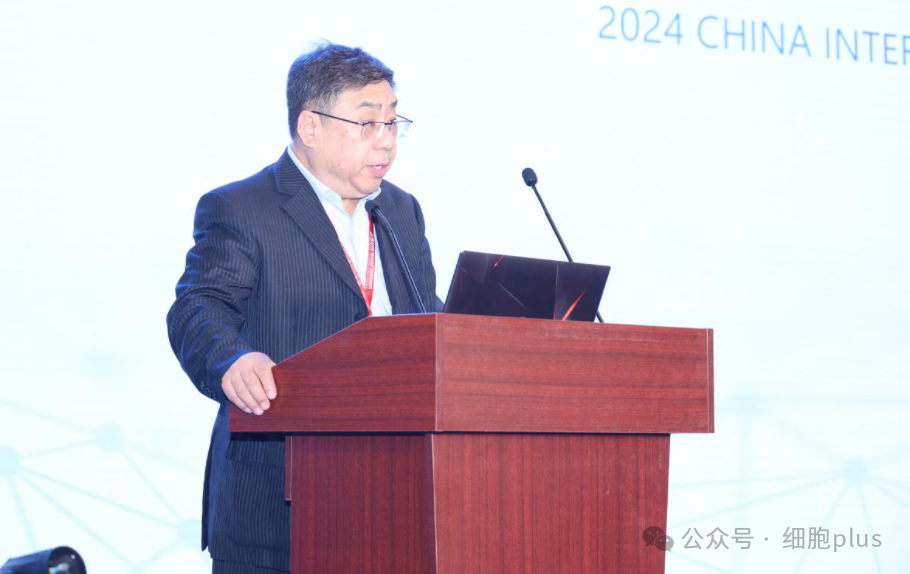
The 2024 China International Cell Precision Medicine Clinical Application Conference was held in Jinan. Through years of academic discussions in some fields of cell research and clinical transformation, and drawing on existing foreign models of cell supervision, relevant experts at this conference believe that our country should also follow international practices and promote "management of autologous stem cells as a third type of medical technology." He has served as associate professor and director of the Department of Zoology, China Medical University; doctor of biology at the University of Basel, Switzerland; postdoctoral fellow at the University of Geneva; senior scientist at the University of Zurich, China; researcher at the Institute of Medical Laboratory Animals, Chinese Academy of Medical Sciences; PI of Stem Cell Project, National Major Project of Stem Cell and Transformation Research, School of Life Sciences, Peking University; Professor Gao Shuping, president of the Cell Research and Application Branch of China Anti-Aging Promotion Association, wrote the book. Some relevant experts collectively reached the "Expert Recommendation on the Management of Autologous Stem Cells as a Third Type of Medical Technology" and was announced at this conference.

Gao Shuping, President of the Cell Research and Application Branch of China Anti-Aging Promotion Association, presided over the meeting
At present, my country's stem cells are supervised according to a "dual-track system" based on drugs (biologics) and technologies (medical technology). Enterprises 'stem cell preparations are declared according to drugs and are supervised by the State Food and Drug Administration; clinical research on stem cell technology carried out by medical institutions is supervised by the National Health Commission. In the past 30 years, there has been controversy over whether stem cells should be managed as "drugs" or "medical technology". Although since the implementation of the "double filing" management method, there have been more than 100 stem cell clinical research filing projects in my country, and some important achievements have been made. Progress, but there are also some problems and challenges, such as the drug management model requiring stem cell therapies to be more effective in preparation, quality control, Clinical trials and other aspects follow strict Good Manufacturing Practices (GMP), which undoubtedly increases research and development and management costs and limits the popularization and application of stem cell therapies.
Moreover, stem cell therapy has individual characteristics, and the source, processing and application of stem cells may be different for each patient, which makes it difficult to adapt to the diversity and personalized needs of stem cell therapy in accordance with the standardized drug management model. There are also limited tissue sources. The number of cells produced from the same tissue source is limited, and a sufficient quantitative quantity cannot be produced, which does not conform to the basic attributes and characteristics of the drug. The cell composition and content changes greatly. The same tissue and the cell composition produced by different generations are also different. The principle of drugs is that the components are the same and fixed, and they are uniform and stable. Moreover, the main advantage of stem cells is that the biological effect produced by living cells into the body exists in the body for a long time and continues to play a role. When turned into a preparation, it is just a single cytokine.
Due to many factors, we currently think it is unscientific to follow the drug management model of stem cells! If stem cells are managed according to the process of drug registration application and approval, not only will the investment be too large (often several billion), but also the time period is too long (about 8-10 years), which makes it difficult to develop continuously, and objectively limits the clinical transformation and application of stem cells. The current problems in the clinical application of stem cells have attracted the attention of many academicians and experts. 54 academicians and experts jointly called for opening the threshold for stem cell transformation applications as soon as possible. In the annual two sessions, many NPC deputies and CPPCC members enthusiastically called on the country to accelerate the pace of clinical transformation application of stem cells as soon as possible.
At present, the United States, Switzerland, the European Union, and Japan have listed autologous stem cells as the third category of medical technology to manage. The supervision of stem cells in the United States adopts hierarchical supervision. Low-risk products are mainly stem cells used autologous and can be directly applied in hospitals. High-risk products must be approved by the FDA. Asian countries such as Japan and South Korea are open to stem cell therapy, have approved the marketing of some stem cell therapy products, and have adopted flexible regulatory policies to support the development of stem cell technology. In view of the current development needs of stem cell therapy in my country, on the occasion of the 2024 China International Cell Precision Medicine Clinical Application Conference, many experts reached the "Expert Recommendations on the Management of Autologous Stem Cells as a Third Type of Medical Technology."
Expert advice content